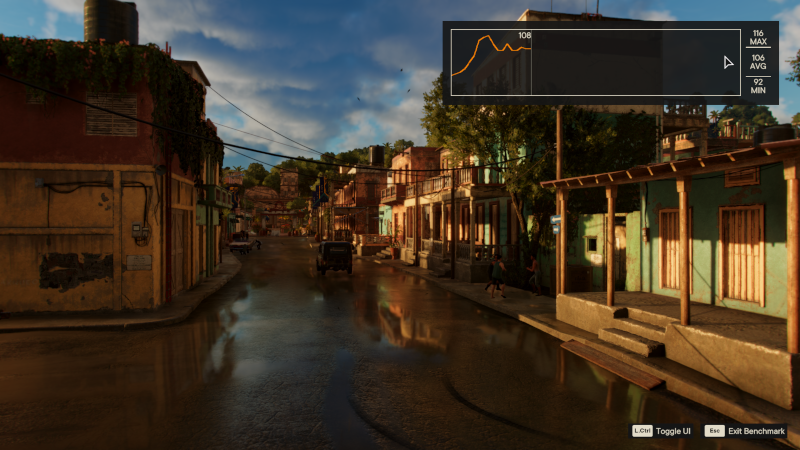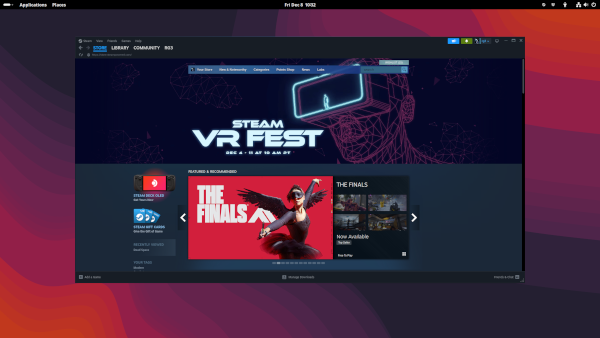
I'm playing Far Cry 6 on Linux
2023-12-10 UPDATE: From Mastodon, arcepi suggested the instability problems that I described below and served as a motivation to try Far Cry 6 on Linux could be coming from having switched from NVIDIA to AMD without reinstalling Windows, because of leftover files from the NVIDIA drivers. Today morning I reinstalled Windows to test this and, indeed, the Deathloop and Far Cry 6 crashes seem to be gone (yay!). That would have removed my original motivation to try to run the game on Linux, but it doesn’t take away the main points of the post. Do take into account that the instability doesn’t seem to exist anymore (and I hope this applies to more future titles I play) but it’s still the background story to explain why I decided to install Far Cry 6 on my Fedora 39 system, so the original post follows below.
If you’ve been paying attention to the evolution of the Linux gaming ecosystem in recent years, including the release of the Steam Deck and the new Steam Deck OLED, it’s likely your initial reaction to the blog post title is a simple “OK”. However, I’m coming from a very particular place so I wanted to explain my point of view and the significance of this, and hopefully you’ll find the story interesting.
As a background, let me say I’ve always gamed on Windows when using my PC. If you think I’m an idiot for doing so lately, specially because my work at Igalia involves frequently interacting with Valve contractors like Samuel Pitoiset, Timur Kristóf, Mike Blumenkrantz or Hans-Kristian Arntzen, you’d be more than right. But hear me out. I’ve always gamed on Windows because it’s the safe bet. With a couple of small kids at home and very limited free time, when I game everything has to just work. No fiddling around with software, config files, or wasting time setting up the software stack. I’m supposed to boot Windows when I want to play, play, and then turn my computer off. The experience needs to be as close to a console as possible. And, for anything non-gaming, which is most of it, I’d be using my Linux system.
In the last years, thanks to the work done by Valve, the Linux gaming stack has improved a lot. Despite this, I’ve kept gaming on Windows for a variety of reasons:
-
For a long time, my Linux disk only had a capacity of 128GB, so installing games was not a real possibility due to the amount of disk space they need.
-
Also, I was running Slackware and installing Steam and getting the whole thing running implied a fair amount of fiddling I didn’t even want to think about.
-
Then, when I was running Fedora on a large disk, I had kids and I didn’t want to take any risks or possibly waste time on that.
So, what changed?
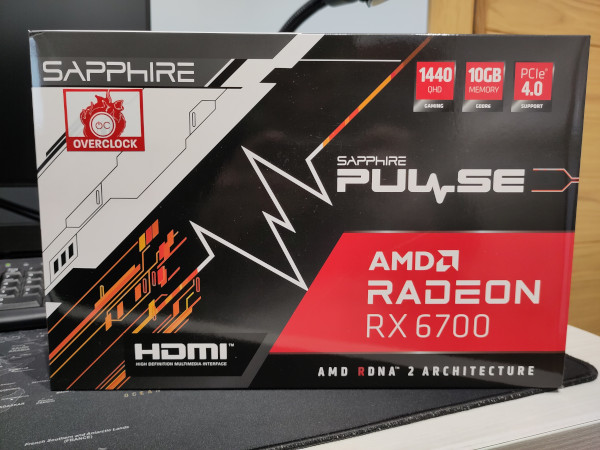
Earlier this year I upgraded my PC and replaced an old Intel Haswell i7-4770k with a Ryzen R5 7600X, and my GPU changed from an NVIDIA GTX 1070 to a Radeon RX 6700. The jump in CPU power was much bigger and impressive than the more modest jump in GPU power. But talking about that and the sorry state of the GPU market is a story for another blog post. In any case, I had put up with the NVIDIA proprietary driver for many years and I think, on Windows and for gaming, NVIDIA is the obvious first choice for many people, including me. Dealing with the proprietary blob under Linux was not particularly problematic, specially with the excellent way it’s handled by RPMFusion on Fedora, where essentially you only have to install a few packages and you can mostly forget about it.
However, given my recent professional background I decided to go with an AMD card for the first time. I wanted to use a fully open source graphics stack and I didn’t want to think about making compromises in Wayland support or other fronts whatsoever. Plus, at the time I upgraded my PC, the timing was almost perfect for me to switch to an AMD card, because:
-
AMD cards were, in general, performing better for the same price than NVIDIA cards, except for ray tracing.
-
The RX 6700 non-XT was on sale.
-
It had the same performance as a PS5 or so.
-
It didn’t draw a ton of power like many recent high-end GPUs (175W, similar to the 1070 and its 150W TDP).
After the system upgrade, I did notice a few more stability problems when gaming under Windows, compared to what I was used to with an NVIDIA card. You can find thousands of opinions, comments and anecdotes on the Internet about the quality of AMD drivers, and a lot of people say they’re a couple of steps below NVIDIA drivers. It’s not my intention at all to pile up on those, but it’s true my own personal experience is having generally more crashes in games and having to face more weird situations since I switched to AMD. Normally, it doesn’t get to the point of being annoying at all, but sometimes it’s a bit surprising and I could definitely notice that increase in instability without any bias on my side, I believe. Which takes us to Far Cry 6.
A few days ago I finished playing Doom Eternal and its expansions (really nice game, by the way!) and I decided to go with Far Cry 6 next. I’m slowly working my way up with some more graphically demanding games that I didn’t feel comfortable with playing on the 1070. I went ahead and installed the game on Windows. Being a big 70GB download (100GB on disk), that took a bit of time. Then I launched it, adjusted the keyboard and mouse settings to my liking and I went to the video options menu. The game had chosen the high preset for me and everything looked good, so I attempted to run the in-game benchmark to see if the game performed well with that preset (I love it when games have built-in benchmarks!). After a few seconds in a loading screen, the game crashed and I was back to the desktop. “Oh, what a bad way to start!”, I thought, without knowing what lied ahead. I launched the game again, same thing.
On the course of the 2 hours that followed, I tried everything:
-
Launching the main game instead of the benchmark, just in case the bug only happened in the benchmark. Nope.
-
Lowering quality and resolution.
-
Disabling any advanced setting.
-
Trying windowed mode, or borderless full screen.
-
Vsync off or on.
-
Disabling the overlays for Ubisoft, Steam, AMD.
-
Rebooting multiple times.
-
Uninstalling the drivers normally as well as using DDU and installing them again.
Same result every time. I also searched on the web for people having similar problems, but got no relevant search results anywhere. Yes, a lot of people both using AMD and NVIDIA had gotten crashes somewhere in the game under different circumstances, but nobody mentioned specifically being unable to reach any gameplay at all. That day I went to bed tired and a bit annoyed. I was also close to having run the game for 2 hours according to Steam, which is the limit for refunds if I recall correctly. I didn’t want to refund the game, though, I wanted to play it.
The next day I was ready to uninstall it and move on to another title in my list but, out of pure curiosity, given that I had already spent a good amount of time trying to make it run, I searched for it on the Proton compatibility database to see if it could be run on Linux, and it seemed to be possible. The game appeared to be well supported and it was verified to run on the Deck, which was good because both the Deck and my system have an RDNA2 GPU. In my head I wasn’t fully convinced this could work, because I didn’t know if the problem was in the game (maybe a bug with recent updates) or the drivers or anywhere else (like a hardware problem).
And this was, for me, when the fun started. I installed Steam on Linux from the Gnome Software app. For those who don’t know it, it’s like an app store for Gnome that acts as a frontend to the package manager.
Steam showed up there with 3 possible sources: Flathub, an “rpmfusion-nonfree-steam” repo and the more typical “rpmfusion-nonfree” repo. I went with the last option and soon I had Steam in my list of apps. I launched that and authenticated using the Steam mobile app QR code scanning function for logging in (which is a really cool way to log in, by the way, without needing to recall your username and password).
My list of installed games was empty and I couldn’t find a way to install Far Cry 6 because it was not available for Linux. However, I thought there should be an easy way to install it and launch it using the famous Proton compatibility layer, and a quick web search revealed I only had to right-click on the game title, select Properties and choose to “Force the use of a specific Steam Play compatibility tool” under the Compatibility section. Click-click-click and, sure, the game was ready to install. I let it download again and launched it.
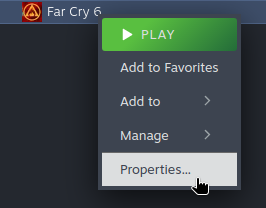
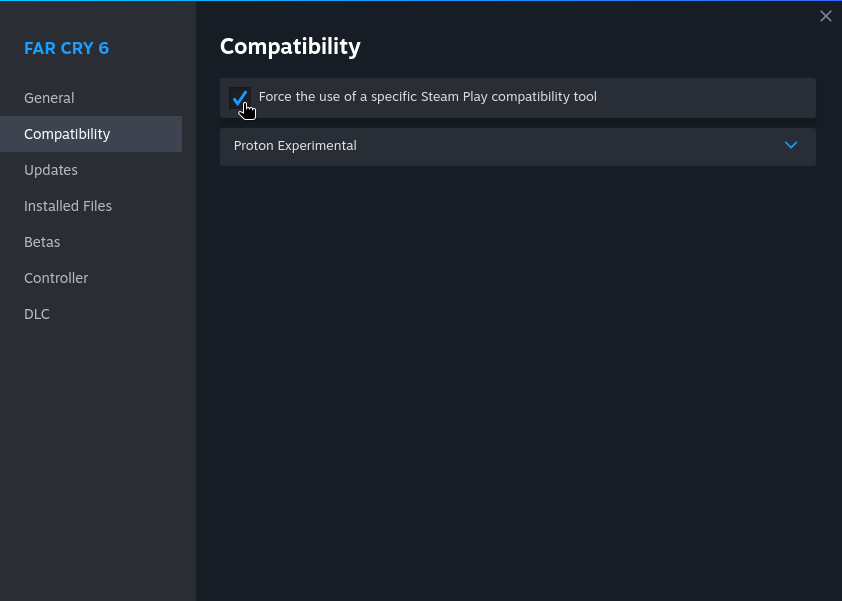
Some stuff pops up about processing or downloading Vulkan shaders and I see it doing some work. In that first launch, the game takes more time to start compared to what I had seen under Windows, but it ends up launching (and subsequent launches were noticeably faster). That includes some Ubisoft Connect stuff showing up before the game starts and so on. Intro videos play normally and I reach the game menu in full screen. No indication that I was running it on Linux whatsoever. I go directly to the video options menu, see that the game again selected the high preset, I turn off VSync and launch the benchmark. Sincerely, honestly, completely and totally expecting it to crash one more time and that would’ve been OK, pointing to a game bug. But no, for the first time in two days this is what I get:
The benchmark runs perfectly, no graphical glitches, no stuttering, frame rates above 100FPS normally, and I had a genuinely happy and surprised grin on my face. I laughed out loud and my wife asked what was so funny. Effortless. No command lines, no config files, nothing.
As of today, I’ve played the game for over 30 hours and the game has crashed exactly once out of the blue. And I think it was an unfortunate game bug. The rest of the time it’s been running as smooth and as perfect as the first time I ran the benchmark. Framerate is completely fine and way over the 0 frames per second I got on Windows because it wouldn’t run. The only problem seems to be that when I finish playing and exit to the desktop, Steam is unable to stop the game completely for some reason (I don’t know the cause) and it shows up as still running. I usually click on the Stop button in the Steam interface after a few seconds, it stops the game and that’s it. No problem synchronizing game saves to the cloud or anything. Just that small bug that, again, only requires a single extra click.
2023-12-10 UPDATE: From Mastodon, Jaco G and Berto Garcia tell me the game not stopping problem is present in all Ubisoft games and is directly related to the Ubisoft launcher. It keeps running after closing the game, which makes Steam think the game is still running. You can try to close it from the tray if you see the Ubisoft icon there and, if that fails, you can stop the game like I described above.
Then I remember something that had happened a few months before, prior to starting to play Doom Eternal under Windows. I had tried to play Deathloop first, another game in my backlog. However, the game crashed every few minutes and an error window popped up. The amount and timing of the crashes didn’t look constant, and lowering the graphics settings sometimes would allow me to play the game a bit longer, but in any case I wasn’t able to finish the game intro level without crashes and being very annoyed. Searching for the error message on the web, I saw it looked like a game problem that was apparently affecting not only AMD users, but also NVIDIA ones, so I had mentally classified that as a game bug and, similarly to the Far Cry 6 case, I had given up on running the game without refunding it hoping to be able to play it in the future.
Now I was wondering if it was really a game bug and, even if it was, if maybe Proton could have a workaround for it and maybe it could be played on Linux. Again, ProtonDB showed the game to be verified on the Deck with encouraging recent reports. So I installed Deathloop on Linux, launched it just once and played for 20 minutes or so. No crashes and I got as far as I had gotten on Windows in the intro level. Again, no graphical glitches that I could see, smooth framerates, etc. Maybe it was a coincidence and I was lucky, but I think I will be able to play the game without issues when I’m done with Far Cry 6.
In conclusion, this story is another data point that tells us the quality of Proton as a product and software compatibility layer is outstanding. In combination with some high quality open source Mesa drivers like RADV, I’m amazed the experience can be actually better than gaming natively on Windows. Think about that: the Windows game binary running natively on a DX12 or Vulkan official driver crashes more and doesn’t work as well as the game running on top of a Windows compatibility layer with a graphics API translation layer, on top of a different OS kernel and a different Vulkan driver. Definitely amazing to me and it speaks wonders of the work Valve has been doing on Linux. Or it could also speak badly of AMD Windows drivers, or both.
Sure, some new games on launch have more compatibility issues, bugs that need fixing, maybe workarounds applied in Proton, etc. But even in those cases, if you have a bit of patience, play the game some months down the line and check ProtonDB first (ideally before buying the game), you may be in for a great experience. You don’t need to be an expert either. Not to mention that some of these details are even better and smoother if you use a Steam Deck as compared to an (officially) unsupported Linux distribution like I do.

